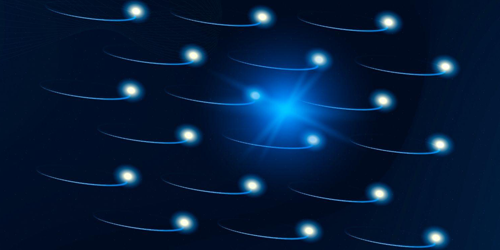Squeezing a Wigner Solid
In 1934, theoretical physicist Eugene Wigner predicted that a low-temperature, low-density gas of electrons on a background of evenly distributed positive charges will crystallize to form a 2D lattice—a structure now known as a Wigner crystal (WC). In the past two decades, the realization of such structures has given physicists a powerful platform for investigating quantum many-body interactions, but these experiments have always involved WCs that were isotropic, limiting the kinds of phenomena that can be studied. Now, Shafayat Hossain and colleagues at Princeton University have created a 2D WC that is anisotropic [1].
Hossain and his colleagues created their WC in a structure that combined the necessary high degree of order with an anisotropic electronic energy band: a quantum well formed from a single crystal of aluminum arsenide (AlAs). Electrons in the conduction band of AlAs exhibit two energy minima, or “valleys,” aligned with two of the crystal axes. By squeezing the sample along one of these axes, the team manipulated the energy of the conduction-band electrons, confining them—and therefore the WC—to a single valley.
The researchers measured a pronounced anisotropy in their WC’s electrical properties, and also found that it was more “slippery” in one direction. WCs are typically pinned in place by rare defects in the host material but can be unpinned by a strong enough electric field. The WC created by Hossain and his colleagues was much easier to slide along the squeezed axis than along the other axis. Most surprising, however, was their WC’s melting point of up to 0.9K—far above the 100mK predicted by theory. The team is now planning experiments to explore whether the anisotropy explains this high melting point.
–Allison Gasparini
Allison Gasparini is a freelance science writer based in Santa Cruz, CA.
References
- Md. S. Hossain et al., “Anisotropic two-dimensional disordered Wigner solid,” Phys. Rev. Lett. 129, 036601 (2022).




